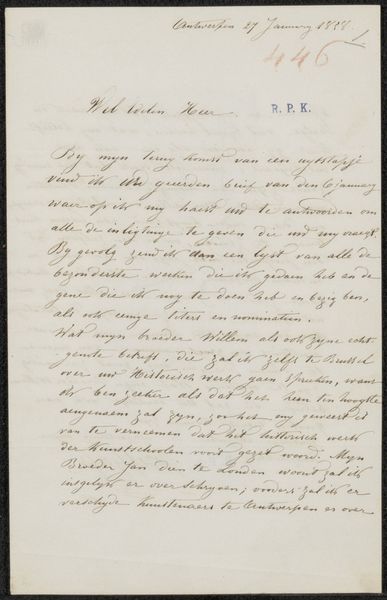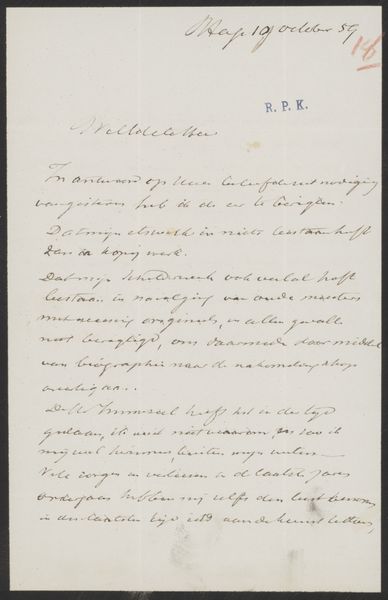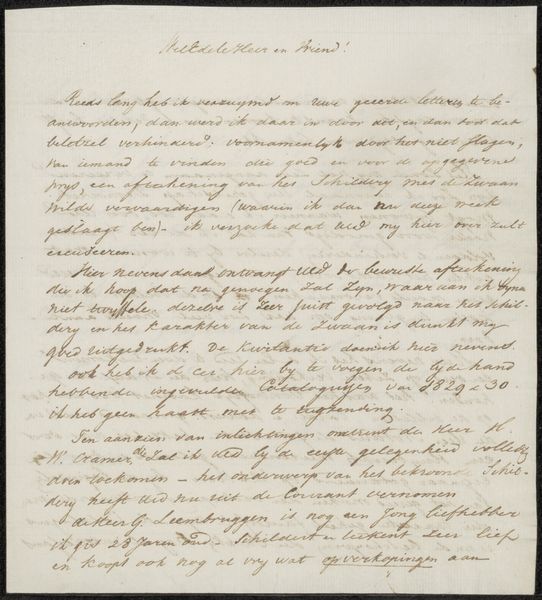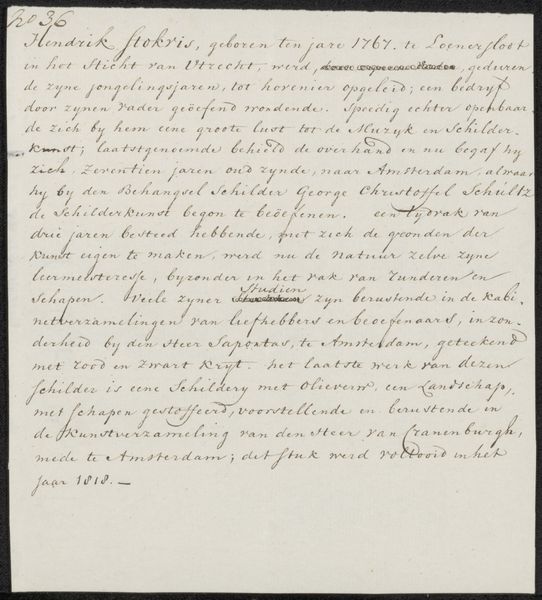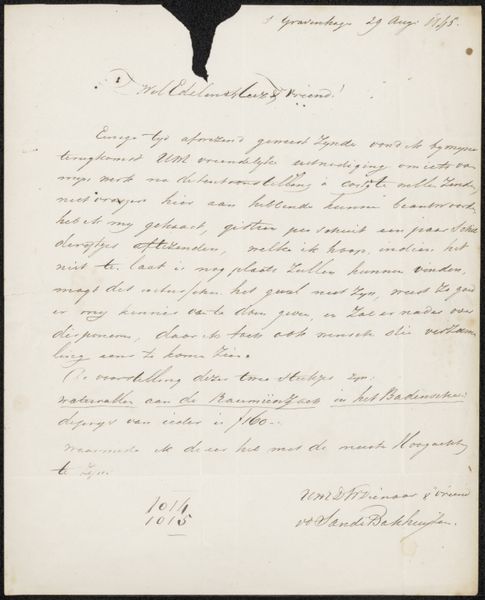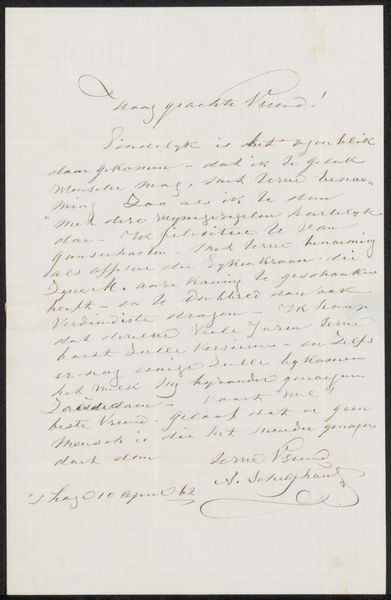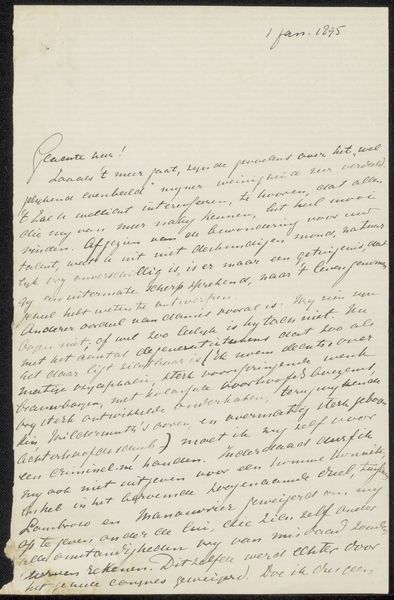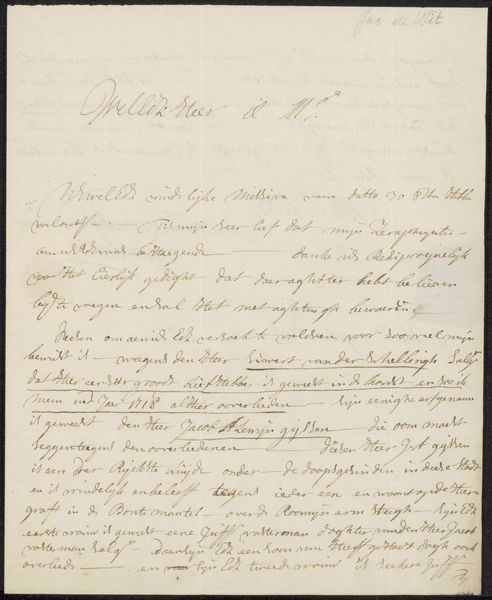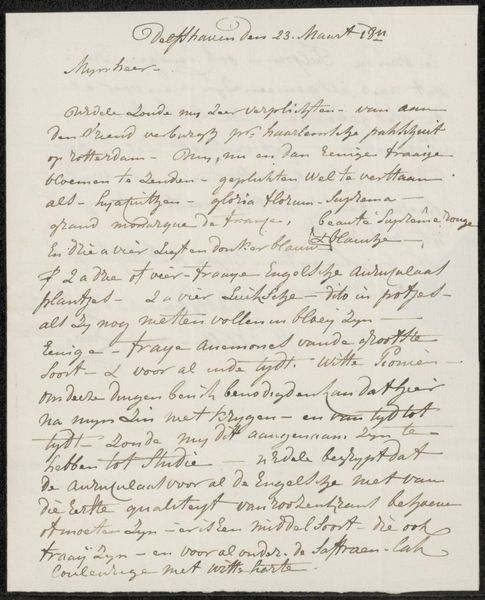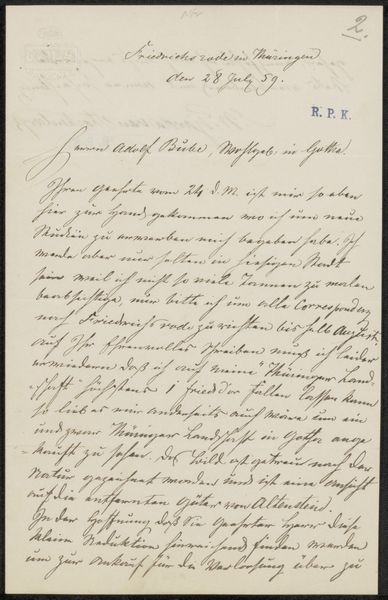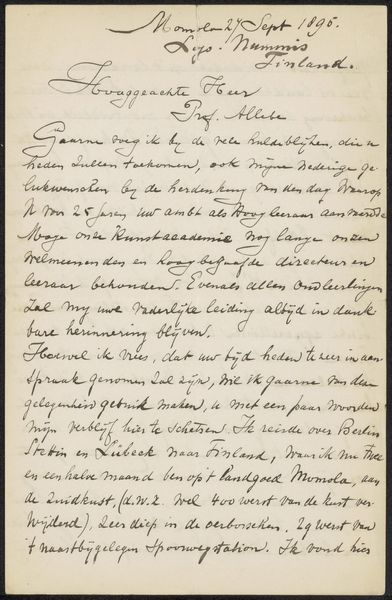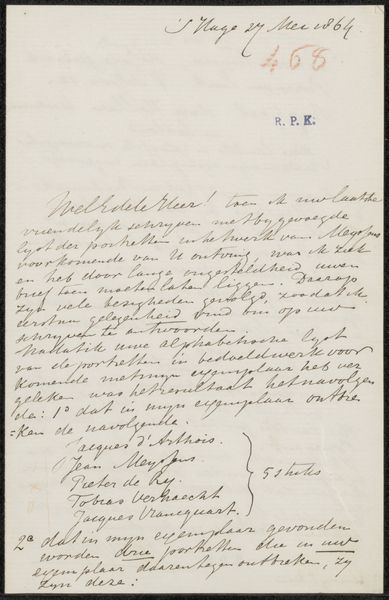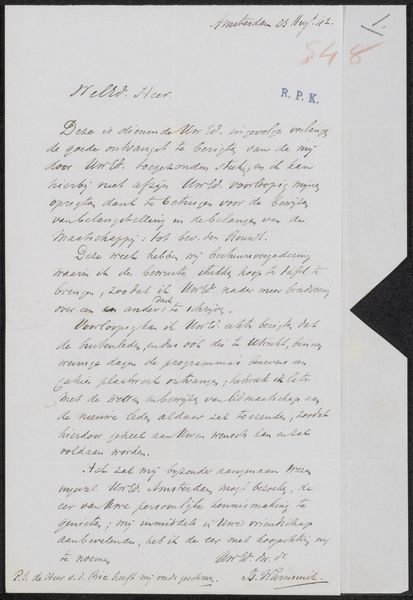
drawing, paper, ink
#
portrait
#
drawing
#
neoclacissism
#
paper
#
ink
Copyright: Rijks Museum: Open Domain
Curator: Here we have "Brief aan Adriaan van der Willigen," a letter dating back to 1812 by Reinier Vinkeles, held at the Rijksmuseum. It's rendered in ink on paper, a fine example of neoclassical portraiture in script. Editor: My initial reaction is one of slight unease. The spidery handwriting, combined with the age of the paper, lends it a ghostly, almost anxious air. I imagine receiving this and struggling to decipher its hidden urgencies. Curator: That anxiety might stem from the historical context. Vinkeles, a prominent engraver, was likely corresponding about commissions, publications—aspects tied to patronage and reputation, intensely felt in that era. Editor: Precisely. Beyond the neat neoclassical lines—notice that rational order—it screams of social pressure, doesn’t it? Consider how correspondence was the connective tissue for intellectual and economic networks. This letter, then, is not just a personal note; it is a transaction in the marketplace. Curator: Certainly, and within the text, Vinkeles details the distribution of plates, highlighting the commercial nature of his artistic activity, referencing Hobbema, a landscape painter from the Dutch Golden Age, implying a wish to revive artistic traditions for the benefit of a patron or institution. Editor: And let’s not forget who gets included in these traditions. Letters such as these determined whose voices mattered and circulated and it shaped the early art historical canons. I find it important to highlight that Vinkeles may be both creating art and actively defining his position with an establishment which inevitably exclude people on the basis of class and gender. Curator: An insightful point; the medium is as crucial as the message. This form of direct communication allows a clear insight into the artistic exchanges of that time, and shows the economic system involved. Editor: Agreed. The tension between private communication and public performance feels very present. The scale here feels so personal; you are able to examine not just artistic creation, but the wider structures shaping the creator’s world. Curator: Looking closely today allows us to consider those intersections you mention. The letter is more than just document. Editor: Indeed, the document contains a powerful perspective on its own right.
Comments
No comments
Be the first to comment and join the conversation on the ultimate creative platform.
